Traditional Yorkshire Parkin
This post may contain affiliate links. See my disclosure policy.
If you’re a fan of gingerbread and are looking for something uniquely different – this traditional Yorkshire Parkin recipe is it! From Yorkshire, England, Parkin is an age-old cake featuring oats and black treacle (molasses) to create a delightfully sticky, chewy cake with a deeply robust flavor that only improves with time!
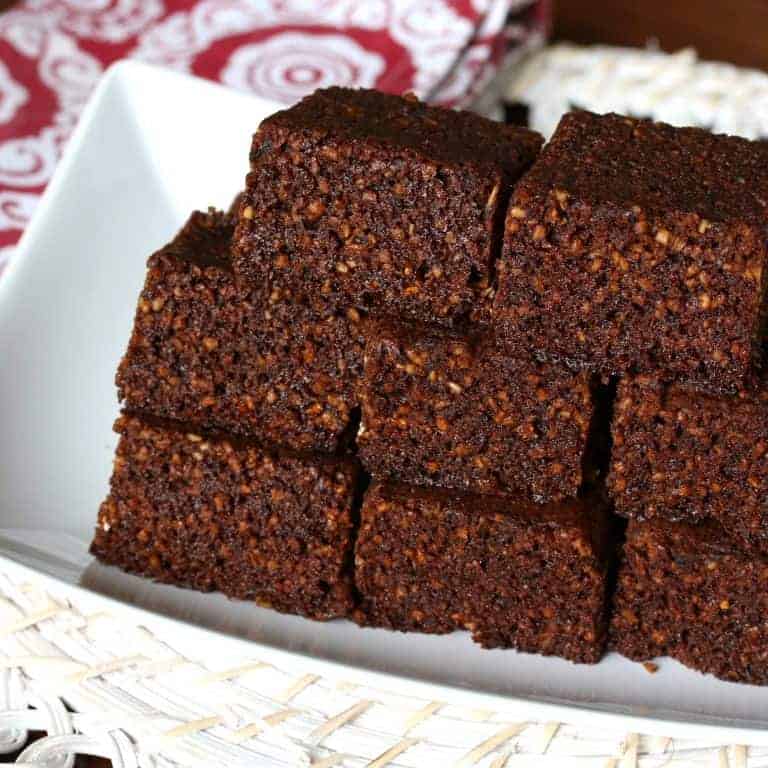
Where Did It Originate?
The year was 1728. Banging his gavel, the magistrate of the West Riding Quarter Session called the courthouse to order. The accused was brought forward. Standing erect in a pose of dignified capitulation, Mrs. Anne Whittaker, occupation housewife, listened as her offense was read aloud.
The crime: She had stolen oatmeal.
Her defense: Why, to make Yorkshire parkin, of course.
The verdict: Guilty as charged but dang, was the parkin worth it!
True story. And that was one of the first ever published references to Yorkshire parkin, the crime of theft, of culinary passion, all in the name of this centuries-old cake.

What is Parkin?
Parkin is a traditional gingerbread cake that originated in Northern England and is made with oatmeal and molasses-like treacle. Traditionally parkin is associated with the month of November with the first Sunday of the month known as “Parkin Sunday.” Specifically it is a key element of Bonfire Night, or Guy Fawkes Night, where the cake is eaten as part of the festivities. However, parkin is also commonly eaten throughout the winter months.
This traditional Yorkshire specialty, though bearing some similarities to gingerbread, is probably very different from anything you’ve had before. It’s as bold, hearty and unforgettable as Yorkshire itself.
I lived in England for 7 years about two hours south of Yorkshire. We go back at least once a year and love exploring and hiking through Yorkshire. It’s such a beautiful area of the country.


Parkin Ingredients
Parkin is commonly associated with Yorkshire, England though it is also eaten in Lancashire. There is at least one key difference between the two versions however: Yorkshire parkin traditionally uses black treacle resulting in a very rich and dark flavor and color.
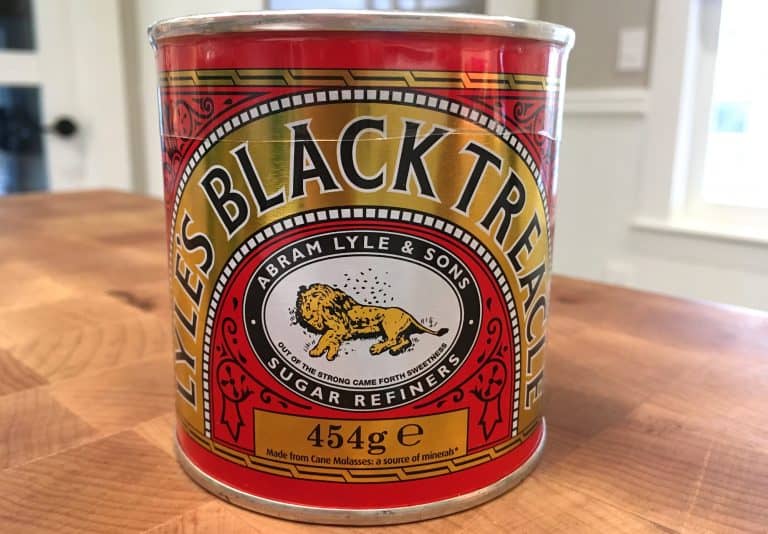
Lancashire uses golden syrup, resulting in both a lighter color and flavor. Lancashire parkin also tends to be sweeter with a higher sugar content.
Many modern recipes for both versions cross regional lines and use some of each. It comes down to personal preference. We’re featuring a more traditional Yorkshire parkin that is heavy on the treacle/molasses with a little golden syrup, but feel free to adjust the black treacle to golden syrup ratio according to your preference. If you’re not sure, go with less treacle and more golden syrup than what this recipe calls for – traditional Yorkshire parkin produces a very bold flavor that you may not be used to.
Important Note: While you can substitute molasses for black treacle, there is no substitute for golden syrup. Corn syrup is not remotely the same thing. It is starkly different in flavor with golden syrup having a wonderfully rich, caramelized flavor. Again, be sure to use genuine golden syrup.
Parkin uses black treacle and/or golden syrup in large quantities resulting in a delightfully chewy, sticky cake.
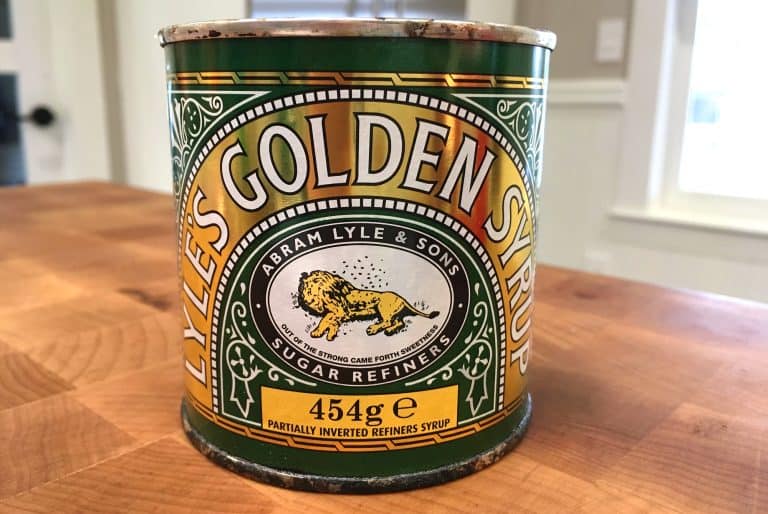
You can also very easily make your own golden syrup.
Check out our recipe for homemade Golden Syrup!
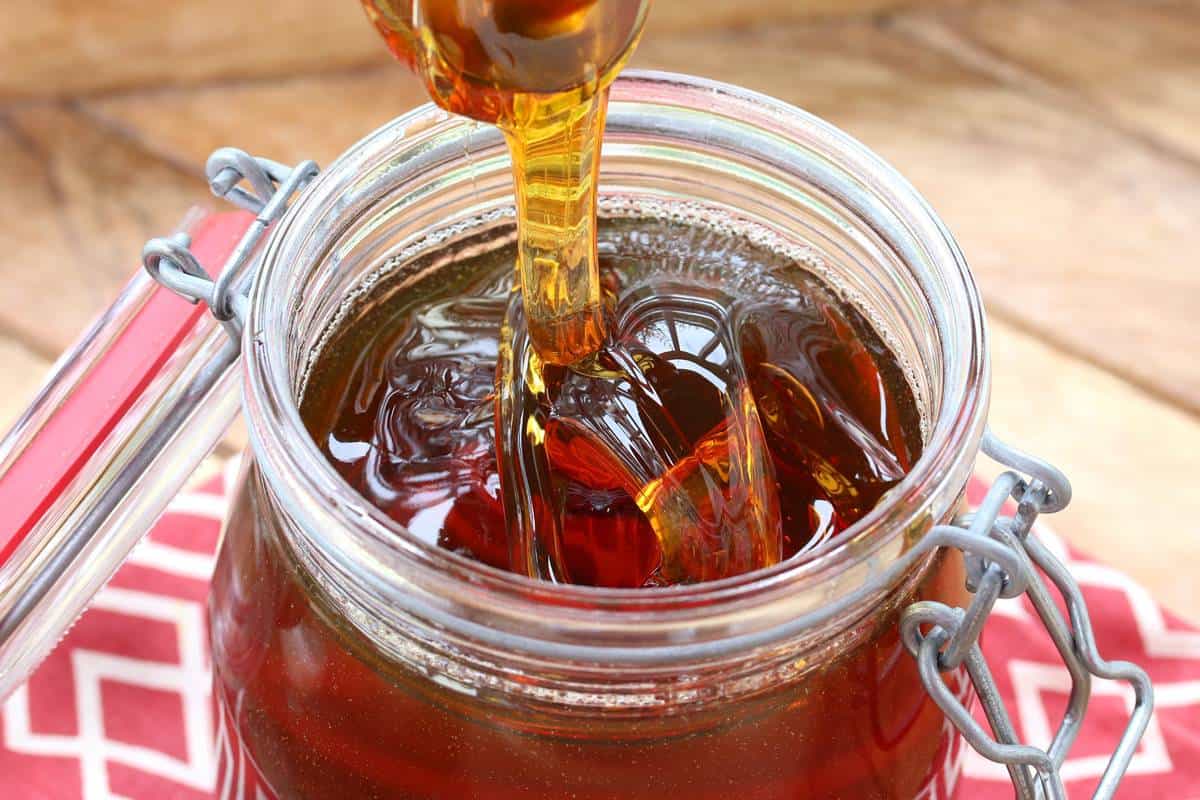
LET’S TALK OATS. Aside from the high quantity of black treacle and/or golden syrup, another thing that makes parkin unique is the addition of oats. Yorkshire parkin simply isn’t Yorkshire parkin without oats. Oats, not wheat, were the staple grain of the poor in this region and that is the primary grain in Yorkshire parkin. The form of oats traditionally used in parkin is not rolled outs, it’s what’s referred to as medium oatmeal in England.
Whole oat groats are dehusked and can either be milled into a fine, medium or course “oatmeal.” Parkin calls for medium. An easy way to make “medium oatmeal” yourself is to take steel-cut oats (also known as Irish oats in the UK) and pulse them briefly in a food processor until they are broken down but not to a fine flour, you want some small chunks to remain which will be visible in the finished parkin and contribute to that wonderful chewy texture of the cake.
Traditionally Yorkshire parkin is also made with lard instead of butter. Lard adds a layer of richness and also creates a moister cake. We’re using some of each to get the best of both worlds but you can use all butter if you prefer.
Finally, a very important key to making parkin is to LET IT SIT IN A SEALED CONTAINER FOR AT LEAST 3 DAYS BEFORE EATING. The resting time is what develops both the texture and the flavor of the cake and is essential. The oats will soften, the treacle and golden syrup will fully penetrate and soak through the grains, and the flavor of the spices will fully develop. So don’t be impatient, let time do its intended job!
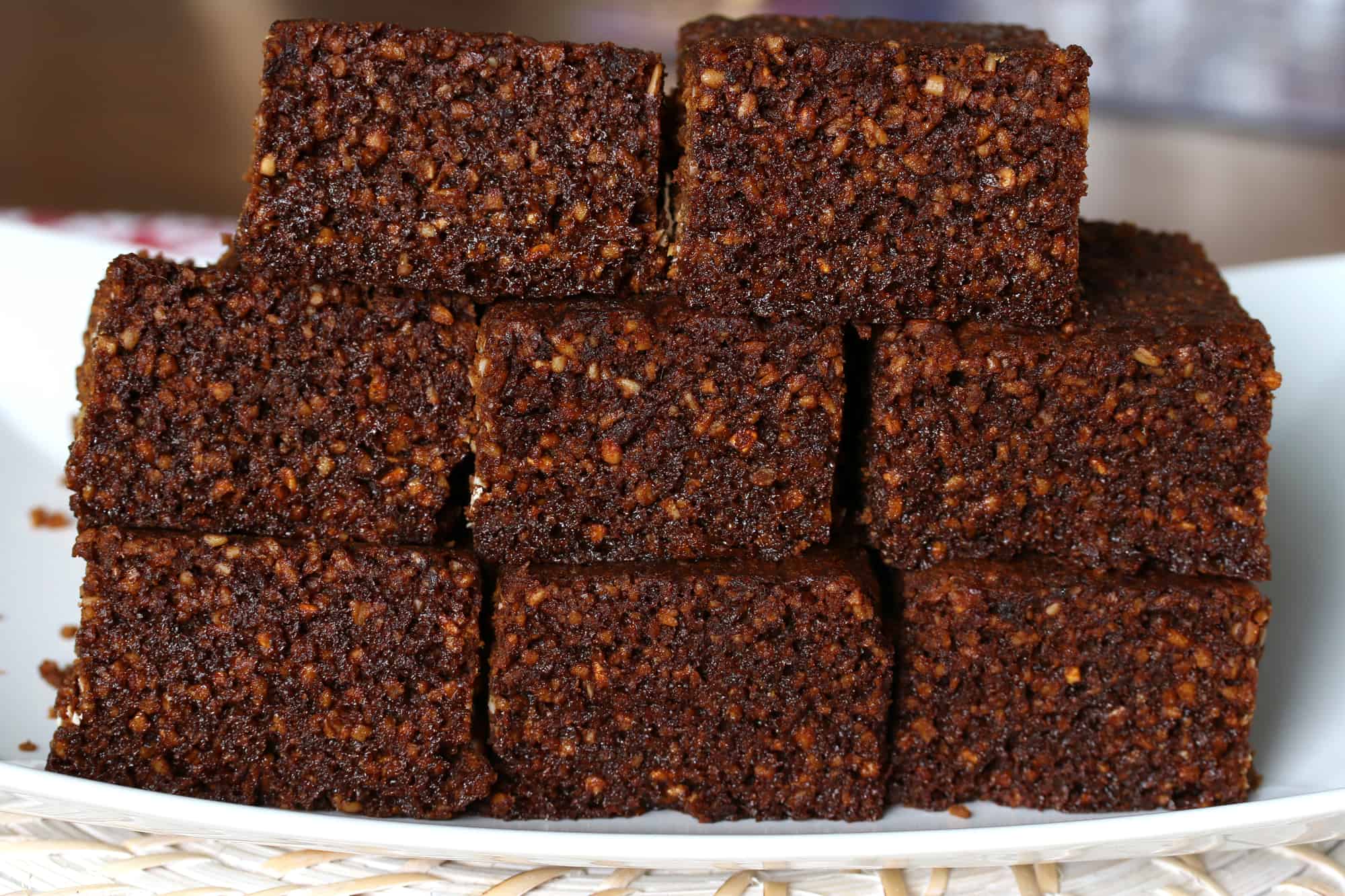
And so we present Yorkshire Parkin, that famously dark, rich, chewy, sticky, deeply flavorful cake that is the provides the perfect sweet comfort for those cold Fall and Winter nights!
If you’re a fan of gingerbread and are looking for something uniquely different – this is it!
And remember, even Mrs. Whittaker was willing to risk jail time in order to make it!
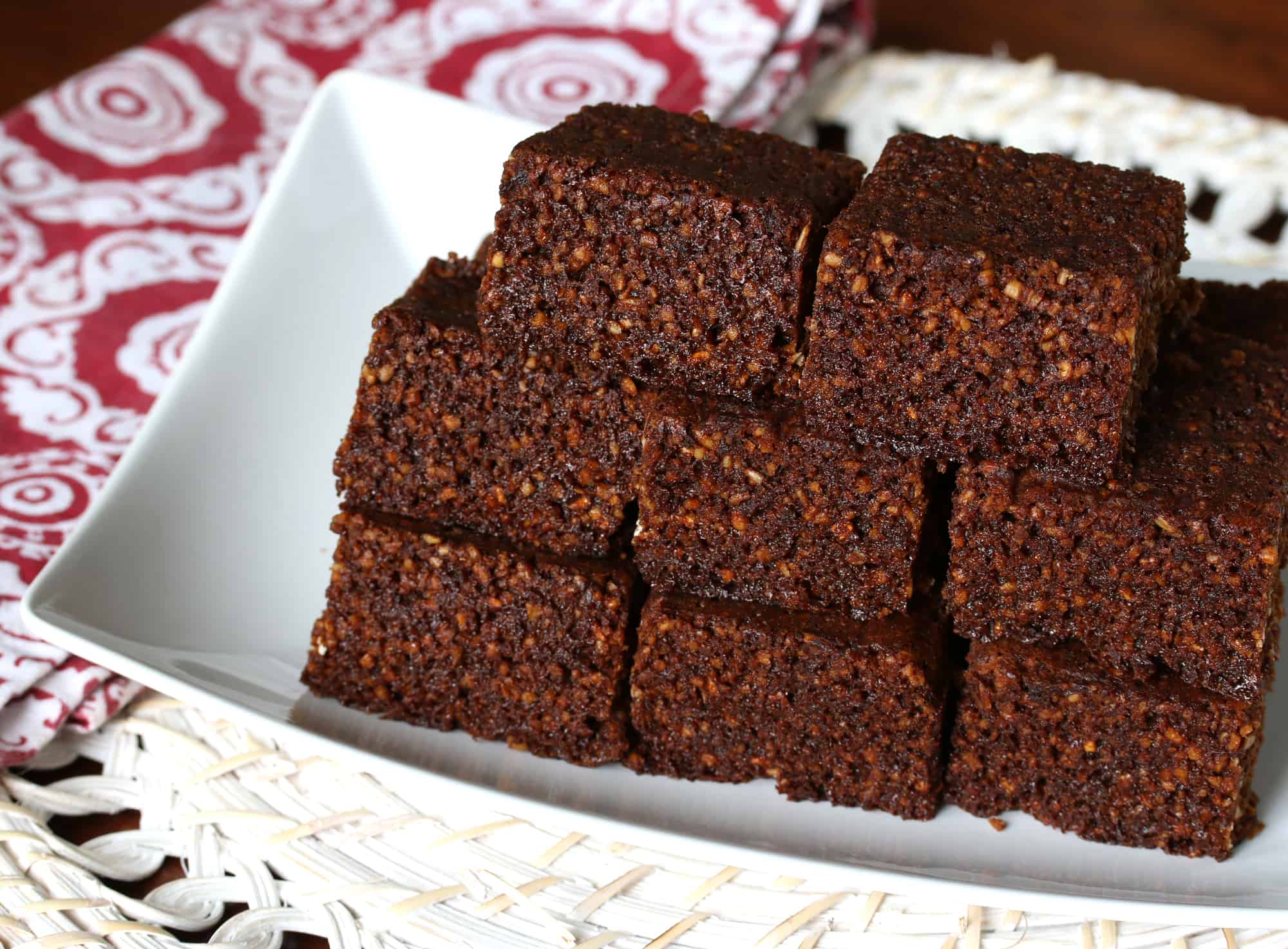
Traditional Yorkshire Parkin Recipe
Let’s get started!
Place the medium oatmeal (see blog post and recipe box for a description of what that is and how to make it) in a large bowl along with the flour, spices, salt and baking powder.
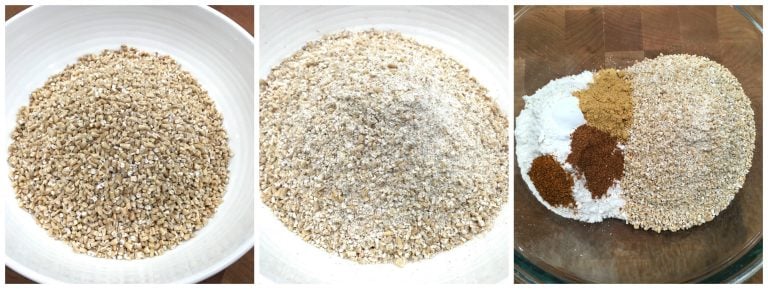
In a medium saucepan add the brown sugar, black treacle, golden syrup, butter and lard (if using).
Heat the mixture until the sugar is melted (don’t boil it) and remove from the heat. Let it cool for 5 minutes.
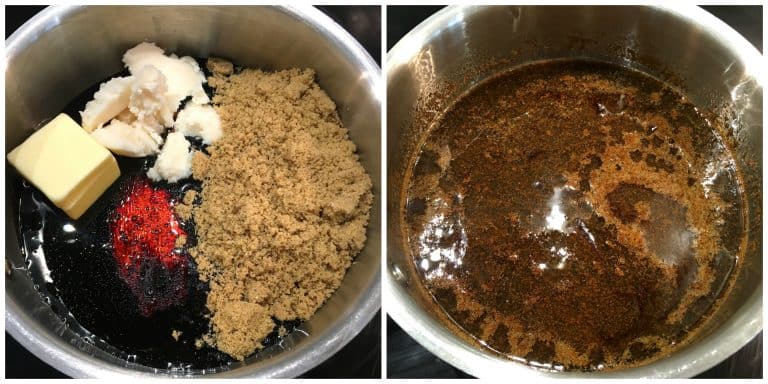
Pour the hot mixture into the dry mixture and stir well to combine.
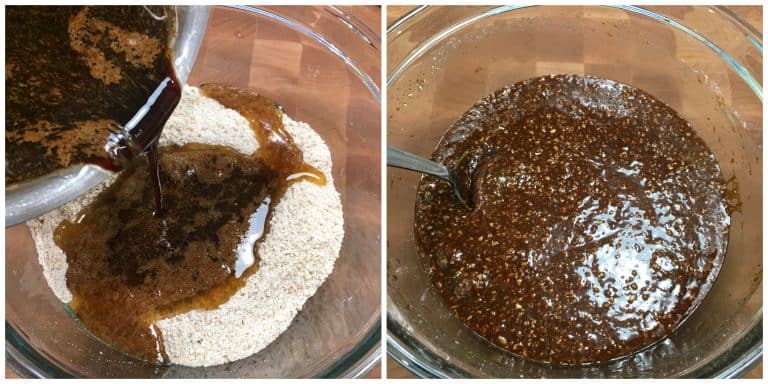
Add the candied ginger, egg and milk and stir well to combine. The batter will be liquid and sticky.
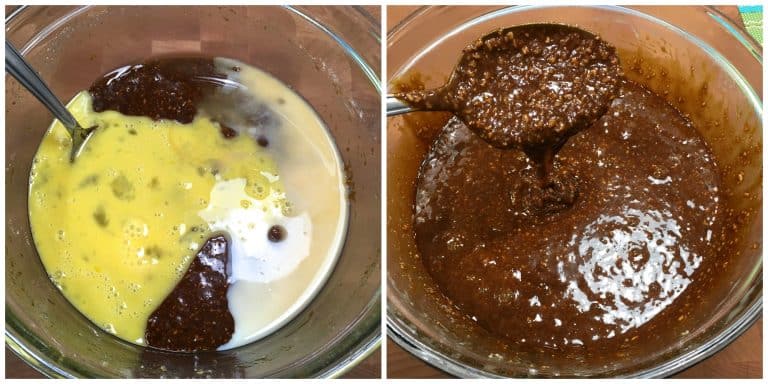
Generously grease an 8×8 inch baking pan and line the bottom with parchment paper.
Pour the batter into the baking pan and smooth the top. In an oven preheated to 300 degrees F, bake the parkin for 70-80 minutes or until a toothpick inserted into the middle comes out clean. The cake should be fairly firm but springy.
Let the cake cool in the pan.
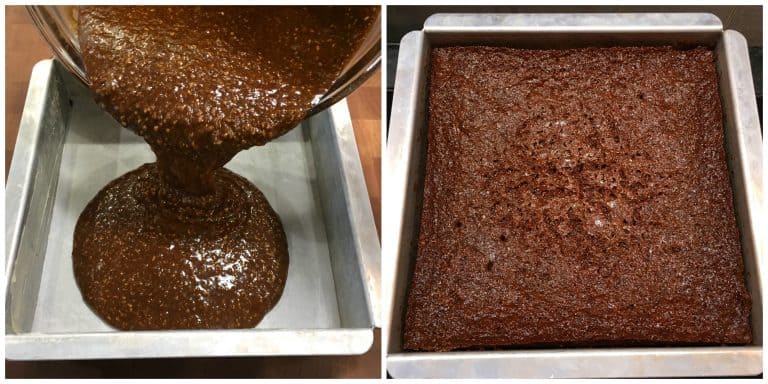
Invert the cake onto a platter. Peel off the parchment paper. Cut the parkin into squares.
Place the squares into an airtight container and let it sit for at least 3 days before eating.
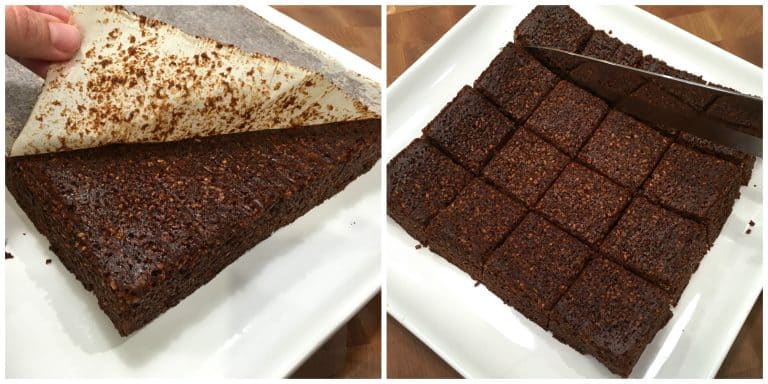
Enjoy!

For more authentic British treats try my:
- Treacle Tart
- Crumpets
- Spotted Dick
- Sticky Toffee Pudding
- Chelsea Buns
- Hot Cross Buns
- Eccles Cakes
- Lardy Cake
- Seed Cake
- Flapjacks
- Scottish Shortbread
- Bara Brith (Welsh Tea Bread)
- Barmbrack (Irish Tea Bread)
- Mincemeat
- Mince Pies
- Christmas Pudding
- Victoria Sponge Cake
Save This Recipe

Yorkshire Parkin
Ingredients
- 1 1/2 cups medium oatmeal , see NOTE
- 3/4 cups all-purpose flour
- 1 1/2 teaspoons baking powder
- 2 teaspoons ground ginger
- 1 teaspoon Mixed Spice
- Homemade Mixed Spice Recipe (recommended)
- 1/4 teaspoon ground mace
- 1/4 teaspoon salt
- 2/3 cups Black Treacle (can substitute dark molasses) **See NOTE about the quantity
- 1/4 cup Golden Syrup (there is no substitute, the flavor is very different than corn syrup)
- Homemade Golden Syrup (click link for recipe – it's very easy to make!)
- 1 cup loosely packed brown sugar
- 6 tablespoons butter
- 2 tablespoons lard (optional, can substitute butter)
- 1/4 cup candied/crystallized ginger , finely diced (optional)
- Homemade Candied Ginger Recipe
- 1 large egg , lightly beaten
- 2 tablespoons whole milk
Instructions
- Generously grease an 8×8 inch baking pan and line the bottom with parchment paper. Preheat the oven to 300 degrees F.
- Place the medium oatmeal in a large bowl along with the flour, spices, salt and baking powder. Set aside.
- In a medium saucepan add the brown sugar, black treacle, golden syrup, butter and lard (if using). Heat the mixture until the sugar is melted (don't boil it) and remove from the heat. Let it cool for 5 minutes.Pour the hot mixture into the dry mixture and stir well to combine. Add the candied ginger, egg and milk and stir well to combine. The batter will be liquid and sticky.Pour the batter into the prepared baking pan and bake 70-80 minutes or until a toothpick inserted into the middle comes out clean. The cake should be fairly firm but springy. Let the cake cool in the pan. Invert the cake onto a platter. Peel off the parchment paper. Cut the parkin into squares.
- Place the squares in an airtight container and let it sit for at least 3 days before eating (not in the fridge or it will get hard). The oats will soften, the treacle and golden syrup will fully penetrate and soak through the grains, and the flavor of the spices will fully develop.
Notes
Nutrition
Originally published on The Daring Gourmet November 10, 2018

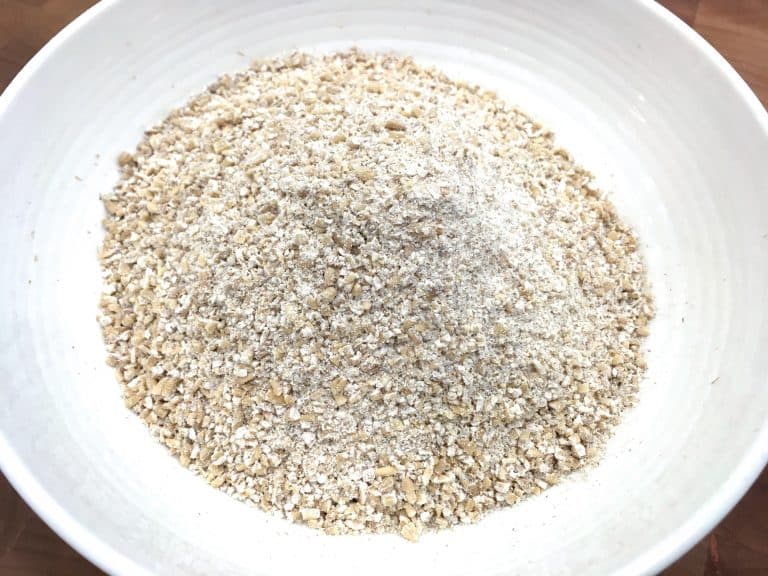


















can you leave out Baking powder ? Very high in slt content and husband has heart issues so low salt dishes only
Hi Julia, the baking powder is the rising mechanism in this. If there are any substitutes for it I have not tried them so I cannot vouch for their effectiveness.
I’ve made this twice and both were delicious! However, the second time I used Oat Bran instead of steel cut oats and the Parkin was edible literally that evening. No waiting three days (or longer) for the oats to soften. It was just as tasty and I was able to serve it next day to company.
Hi Lorraine, I’m so glad you enjoyed it and thank you for your sharing your experience with the substitution!
I used an 8×8 pan and mine is on the bottom of my oven. It looks so sad and now am I as this was for holiday dessert. 🤷♀️
Crisis about the baking pan size. Is the an 8×8 inch pan or 9×13 or something else? Anyone?
Hi Robert, it’s in Step 1 – you’ll need an 8×8 inch baking pan. Happy baking!
Hi,
I’ve been looking around for an interesting sounding recipe and this one sounds great. It’ll take me a few weeks to get to do it, (I’m recovering from a bad back), but I’m looking forward to trying this.
One question; was the temperature set for a fan assisted oven, or a non-fan oven?
Thanks,
Ian
Thank you, Ian. The temperature is set for conventional/non-fan. I’m so sorry about your back and wish you a speedy recovery. When the time comes, happy baking and I hope you enjoy the parkin!
the best Parkin I have tasted for a long time
I have used this recipe a few times and it always turns out perfect. However, I am Lancashire born and bred, and my mother was Lancashire born and bred (Stalybridge). My mother never used any golden syrup – it was always just black treacle. I know – it’s a minor quibble, but I think it was those soft Yaw’sher fowk as used syrup! 😉
Hi, Kimberly, me again.
Having awakened my parkin today on the dot of 72 hours after baking, Michael and I were eager to have a taste.
The fully baked (and risen) sections were tender and delicious–but the under-risen/under-baked center was very yummy too,
kind of like the texture of a dense brownie but not chocolate.
You might want to try this squidgy delight yourself sometime. You know, to add to your repertoire.😊
That said, the new treacle and golden syrup we ordered has already arrived, and I have a new (smaller) container of baking powder in the fridge, so I’ll be baking another batch of your Yorkshire Parkin next week. This time, hopefully, I’ll get it right.
Lol, that’s great, Coralee! :) You do make it sound enticing, I may just have to deliberately under-bake a batch ;) I’m so glad you enjoyed it, in both its forms – thanks so much for the feedback!
My English (now American) husband implored me to bake Parkin using your recipe. I followed it to the letter (at least I think I did),
even using lard (vegetarian) and adding the chopped up candied ginger.
But it sank alarmingly in the middle and was very moist there with very little springbuck. The surrounding parkin looked fine.
After about an hour and a half in the oven, I felt I had to take it out to save the better part of it, cut it into squares, and it is now waiting quietly in its airtight container. But the center squares came out much more dense and sticky than the rest (though it was all sticky 😊
My question it, What do you think went wrong?
Hi Coralee, I’m not sure why your parkin was taking so long to bake but the problem was definitely that it needed to bake longer as the center wasn’t done. The 70-80 minutes is a general guideline as all ovens are different and the baking dish itself impacts baking speed as well, hence the directive to use the “toothpick test” to determine doneness. Your parkin just needed a little more time to bake. For this round you’ll be able to enjoy the fully baked outer perimeter as it should be and then just serve the denser center as “parkin fudge”! :)
Thanks for the quick reply! Parkin fudge sounds yummy.
However, on further thought, I’m suspicious that my baking powder had lost its oomph.
The date on the can is current, but my research said that if not used relatively quickly it might not
perform to expectations.
I’ll try again with some new stuff.
LOVE this recipe – the result is excellent (even my British friends enjoyed it). One comment – both times I’ve made it, it rose beautifully, then fell in the middle. It was done (toothpick test), but I wonder if what’s making that happen is that there’s too much baking powder. I’ve heard that too much baking powder has this effect (early rise, then sinks). Next time I will try maybe 1-1/4 tsp (or maybe only 1 tsp). In case anyone else is having this same issue.
I just made the Parkin recipe and it’s in the oven. I became interested in this recipe when I was exploring my British heritage. I have so many recipes to try. Thanks for a easily followed recipe.
HI,
Your recipe says brown sugar, is that dark brown or light brown sugar? It looks light ifget brwn in the photos.
Thank you,
Stephen Babb
Hi Stephen, I use light because that’s typically what I have on hand but you can use either.
Just found your recipe for the Yorkshire Parkin which I intend to try imminently as I have several recipes for parkin but none have so far done the job. I was born and brought up in Wigan in Lancashire and Parkin was always a staple in the larder. This was a favourite because it stayed moist for days and was a regular addition to the miners jackbit tins. I was surprised to read that Lancashire parkin was considered lighter as the parkin in the photo accompanying the recipe is identical to the parkin I grew up with – it was always dark, rich and moist.Looking forward to trying out this recipe on my quest for the perfect parkin.Thanks
Hi Shirley. I grew up in Adlington and spent many a Saturday working Wigan market!! I agree with you on the colour of Lancashire parking. Both what we made and what we bought was the darker variety. It was a staple for Bonfire Night (November 5). I’m interested to know if the steel cut oats work, so if you tried this, please let me know! Good to see someone from so close to “home”.
I 7sed brown sugar very dark and hard…not happy should of went the shop and buy a tin
Hi, I’m making this as gifts for Christmas. However, I’m a little confused on the amount of butter/lard ratio. It says 6 tbsp butter and then 3 tbsp of lard (Optional etc. In brackets) does that mean I am to reduce the butter quantity to 3 tbsp butter and 3 tbsp lard = 6 tbsp in total. Or, do you mean I need 9 tbsp in total for the lard + the butter. Sorry if I’m sounding a bit thick….lol
Also what is the butter measurement in grams please?
Many thanks xxxx
Hi Jojobinx, it’s the latter – you’ll need 9 tablespoons of fat in total. It can be all butter or you can use part butter and part lard. The metric conversion is updated, simply click on the “Metric” button to the right of the ingredients. Happy baking! :)
Wow! Thanks so much for the quick response. Xxxx
Hello again Kimberley. Well I got around to making a 10 inch 8 inch, 6 inch and whilst my batter looked the part …. it seemed to take an age to cook. I put the oven at 10 °c lower as I was using a fan assisted…. I.e. instead of 300 °f I preheated the oven to 138 °C to account for the fan assisted oven.
So anyways, I made the mistake of opening the oven at 75 minutes. I checked for firmness and jeez…. it was like all the air went out of the 10 inch one. I covered them before to prevent them scorching. I’m left with 3 cakes that like I said…. took a lifetime to bake. Lol.
My husband thinks they smell divine and are very sticky to the touch. But a little depressed in the middle. That was my bad I think for opening the oven thinking they were cooked when they weren’t.
I’m normally meticulous when baking as I bake cakes for friends and family, ‘ lot’ So I’m a little disappointed in myself given its the first time I’ve tried this.
I’ve allowed the cakes to cool completely in their tins and have only just turned them upside down on parchment paper, leaving them in the tins. I use masterclass so cakes are easier to get out.
So do you think that they’ll still be ok to eat and are they supposed to be very sticky to the touch.
So sorry for the late message. Xxx
Hi Jojobinx, yes, fresh out of the baking tins the parkin will be very sticky. Just be sure to transfer the sliced parkin to an airtight container to “mature” for 3 days.
Hi,
I am in the midst of making the Parkin and interpreted the information to use option of brown sugar as 1 cup brown sugar and 3 cups regular white sugar. I went through the rest of the recipe as called for. The resulting syrup is reddish (not golden), and somewhat hard when it dries. Could you perhaps further define the limits of adding some brown sugar?